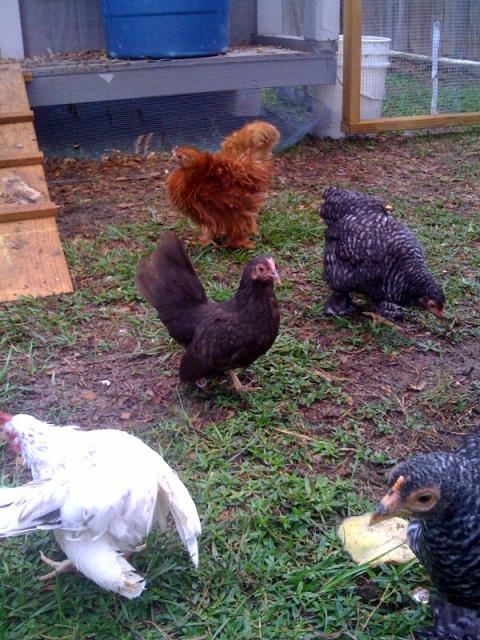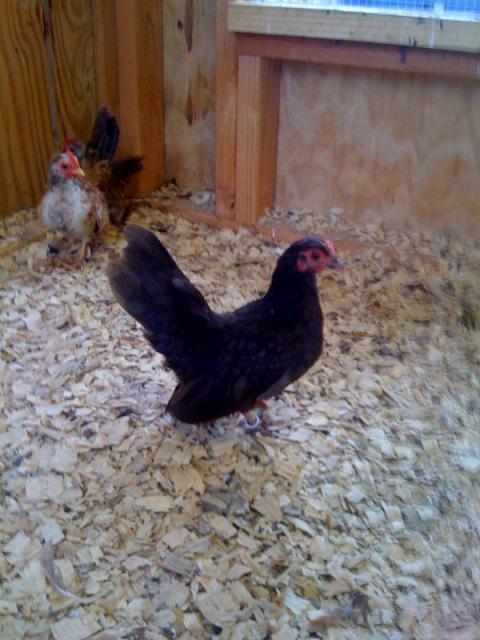Here is some info from your state:
http://hawaii.gov/hdoa/ai/ldc/birds
Procedures for Importing Live Poultry
ADVISORY: Until further notice, there is a temporary ban on the importation of all live avian species from Afghanistan, Albania, Azerbaijan, Bangladesh, Benin, Burkina Faso, Cameroon, Cambodia, Czech Republic (Kraj of Kralovehradecky and Pardubicky only), Djibouti, Egypt, Germany (Kreis of Görlitz and Bautzen), Ghana, Hong Kong, Hungary (Bacs-Kiskun and Csongrad Counties only) , India, Indonesia, Iran, Israel, Ivory Coast (Côte d'Ivoire), Japan, Jordan, Kazakhstan, Kuwait, Laos, Malaysia, Myanmar, Nepal, Niger, Nigeria, Pakistan, Palestinian Autonomous Territories, People's Republic of China, Romania, Russia, Saudi Arabia, South Korea, Sudan, Sweden (Kalmar county only), Thailand, Togo, Turkey, Ukraine, United Kingdom (counties of Suffolk and Norfolk in England only) and Vietnam.
Poultry imported from Canada into the United States are not required to be quarantined. However, the poultry must be accompanied by a veterinary health certificate issued within 30 days of importation and endorsed by a full-time salaried veterinarian of the Canadian government. The poultry must be inspected by a USDA veterinarian at the first U.S. port of entry.
An import permit is not required for poultry imported from Canada through a U.S. - Canadian land border port. However, if the poultry enters the United States through an airport, an import permit (VS Form17-129) (fillable pdf 75kb) is required.
The U.S. Department of Agriculture (USDA) defines poultry to include chickens, doves, ducks, geese, grouse, guinea fowl, partridges, pea fowl, pheasants, pigeons, quail, swans, and turkeys. All birds of these species are subject to the import requirements for poultry, and are not considered by the USDA to be pet birds.
Requirements
30-day quarantine at a USDA Animal Import Center
Animal Import Permit (VS Form17-129) (fillable pdf 75kb)
Veterinary Health Certificate issued by a full-time salaried veterinarian of the agency responsible for animal health of the national government of the exporting country
U.S. Fish and Wildlife Certification
FDA Imported food requirement
Import Procedures (from all countries except Canada)
All poultry must be quarantined for a minimum of 30 days at a USDA Animal Import Center. The poultry must also be accompanied by a USDA import permit (VS Form17-129) (fillable pdf 75kb), issued prior to shipment of the birds. The importer must contact a USDA Animal Import Center to apply for the import permit and reserve quarantine space in the facility. The addresses for the USDA Animal Import Centers are listed below.
New York Animal Import Center
USDA, APHIS, VS
474 International Blvd
Rock Tavern, NY 12575
Phone: (845) 564-2950
Fax: (845) 564-1075
Miami Animal Import Center
USDA, APHIS, VS
6300 NW 36 Street
Miami, FL 33122
Phone: (305) 526-2926
Fax: (305) 526-2929
Los Angeles Animal Import Center
USDA, APHIS, VS
11850 South La Cienega Boulevard
Hawthorne, CA 90250
Phone: (310) 725-1970
Fax: (310) 725-9119
The poultry must be accompanied by a current veterinary health certificate issued within 30 days of importation and endorsed by a full-time salaried veterinarian of the agency responsible for animal health of the national government of the exporting country. The health certificate must be translated into English.
The poultry must be inspected by a USDA port veterinarian at the first U.S. port of entry. The importer must arrange for this inspection at least 72 hours in advance by contacting the USDA port veterinarian at the telephone number listed on the import .
The importer must retain the services of a customs broker to facilitate the importation and, in some cases, to transport the poultry from the port of entry to the USDA Animal Import Center. The importer should contact the Import Center for a list of customs brokers to provide these services.
During the quarantine period, all poultry will be tested to determine if they are free of certain communicable diseases of poultry. The cost for this diagnostic testing will be charged to the importer and is separate from the quarantine fee.
Total payment of the quarantine and diagnostic testing fees is required when the import permit (VS Form17-129) (fillable pdf 75kb) application is submitted. The payment amount will be provided to the importer by the USDA Animal Import Center. The daily user fee rate for standard care, feed, and handling of poultry quarantined in a USDA Animal Import Center is as follows:
Doves, pigeons, quail $ 5.00
Chickens, ducks, grouse, guinea fowl, partridge, pea fowl, pheasants $ 9.00
Large poultry and waterfowl (game cocks, geese, swans, turkey) $ 21.00
Poultry Import from Canada
Poultry imported from Canada into the United States are not required to be quarantined. However, the poultry must be accompanied by a veterinary health certificate issued within 30 days of importation and endorsed by a full-time salaried veterinarian of the Canadian government. The poultry must be inspected by a USDA veterinarian at the first U.S. port of entry.
An import permit is not required for poultry imported from Canada through a U.S. - Canadian land border port. However, if the poultry enters the United States through an airport, an import permit (VS Form17-129) (fillable pdf 75kb) is required.
This permit may be downloaded from this site or by contacting us:
USDA, APHIS, VS
National Center for Import and Export
4700 River Road, Unit 39
Riverdale, MD 20737
(301) 734-8364 telephone
(301) 734-6402 fax
I was wrong, not Wales but Suffolk and Norfolk.













